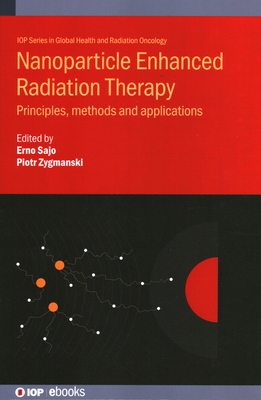Applications of Minimally Invasive Nanomedicine-Based Therapies in 3D in vitro Cancer Platforms
暫譯: 基於微創納米醫學療法的3D體外癌症平台應用
Layla Mohammad-Hadi , By (author) Marym Mohammad-Hadi
- 出版商: Morgan & Claypool
- 出版日期: 2020-10-26
- 售價: $2,410
- 貴賓價: 9.5 折 $2,290
- 語言: 英文
- 頁數: 110
- 裝訂: Hardcover
- ISBN: 1681739712
- ISBN-13: 9781681739717
海外代購書籍(需單獨結帳)
商品描述
Minimally invasive techniques such as Photodynamic Therapy (PDT) and Photochemical Internalisation (PCI) have for years been under investigation for the treatment of solid cancers. A significant number of the recent research studies have applied PDT and PCI to biological three-dimensional (3D) cancer platforms with many of the studies also involving the use of nanoparticles in order to enhance the efficacy of these light-based therapies. Interest in the employment of 3D cancer platforms has increased considerably due to the ability of the platforms to mimic in vivo models better than the conventional two-dimensional (2D) cultures. Some of the advantages of the 3D cancer systems over their 2D counterparts include improved interaction between cancer cells and the surrounding extracellular matrix (ECM) as well as restricted drug penetration which would allow optimization of treatments prior to undertaking of in vivo studies. The different chapters of this book will discuss photosensitizers and nanoparticles used in PDT and PCI in addition to the applications of these treatments in various 3D cancer models.
商品描述(中文翻譯)
微創技術如光動力療法(Photodynamic Therapy, PDT)和光化學內化(Photochemical Internalisation, PCI)多年來一直在研究用於治療實體癌症。最近的許多研究將PDT和PCI應用於生物三維(3D)癌症平台,並且許多研究還涉及使用奈米顆粒以增強這些基於光的療法的療效。由於這些平台能夠比傳統的二維(2D)培養更好地模擬in vivo模型,因此對於使用3D癌症平台的興趣顯著增加。3D癌症系統相較於其2D對應物的優勢包括改善癌細胞與周圍細胞外基質(extracellular matrix, ECM)之間的互動,以及限制藥物滲透,這將允許在進行in vivo研究之前優化治療。本書的不同章節將討論在PDT和PCI中使用的光敏劑和奈米顆粒,以及這些療法在各種3D癌症模型中的應用。
作者簡介
Layla Mohammad-Hadi, University College London
Layla Mohammad-Hadi is a doctoral graduate in nanomedicine and cancer therapy from University College London (UCL) in the Dept. of Nanotechnology, Division of Surgery and Interventional Science. She graduated in Pharmacology and then completed a Master’s degree in Reproductive Medicine and Women’s Health. Her doctoral research was conducted in the Dept. of Nanotechnology, Division of Surgery and Interventional Science at UCL and mainly focused on Photodynamic Therapy (PDT) and the use of Photochemical internalisation (PCI) for the delivery of anti-cancer drugs to their target sites of action in various 3D models of breast and ovarian cancer. After the completion of her Ph.D., Layla continued to carry out research on colorectal and pancreatic cancer therapy using nanomedicine and PDT at UCL.
Marym Mohammad-Hadi, University College London
Marym Mohammad-Hadi is a third-year Ph.D. student researching in nanomedicine and cancer therapy at University College London (UCL) in the Department of Surgical Biotechnology, Division of Surgery and Interventional Science. The main focus of her doctoral research is the development of a multistimulus-responsive nanoparticulate formulation for sonodynamic therapy and sonochemical internalization in pancreatic cancer. Marym obtained a degree in Pharmacology as well as a Master’s degree in Cancer Therapeutics before commencing her Ph.D.
作者簡介(中文翻譯)
萊拉·穆罕默德-哈迪,倫敦大學學院
萊拉·穆罕默德-哈迪是倫敦大學學院(UCL)納米醫學與癌症治療博士畢業生,隸屬於納米技術系,外科與介入科學部門。她獲得藥理學學位後,完成了生殖醫學與婦女健康的碩士學位。她的博士研究在UCL的納米技術系進行,主要集中於光動力療法(Photodynamic Therapy, PDT)以及光化學內化(Photochemical internalisation, PCI)在各種三維乳腺癌和卵巢癌模型中將抗癌藥物送達其作用目標位點的應用。完成博士學位後,萊拉繼續在UCL進行有關結直腸癌和胰腺癌治療的納米醫學和PDT研究。
瑪莉姆·穆罕默德-哈迪,倫敦大學學院
瑪莉姆·穆罕默德-哈迪是倫敦大學學院(UCL)外科生物技術系,外科與介入科學部門的三年級博士生,研究納米醫學和癌症治療。她的博士研究主要集中於開發一種多刺激響應的納米顆粒配方,用於胰腺癌的聲動療法和聲化學內化。瑪莉姆在開始攻讀博士學位之前,獲得了藥理學學位以及癌症治療的碩士學位。
目錄大綱
Introduction
Photodynamic Therapy and Photochemical Internalization
Photosensitizers and Therapeutic Agents Used in PDT and PCI
The Use of Nanoparticles in PDT and PCI
3D in vitro Cancer Models
The Applications of PDT and PCI in 3D in vitro Cancer Models
Authors' Biographies
目錄大綱(中文翻譯)
Introduction
Photodynamic Therapy and Photochemical Internalization
Photosensitizers and Therapeutic Agents Used in PDT and PCI
The Use of Nanoparticles in PDT and PCI
3D in vitro Cancer Models
The Applications of PDT and PCI in 3D in vitro Cancer Models
Authors' Biographies
















